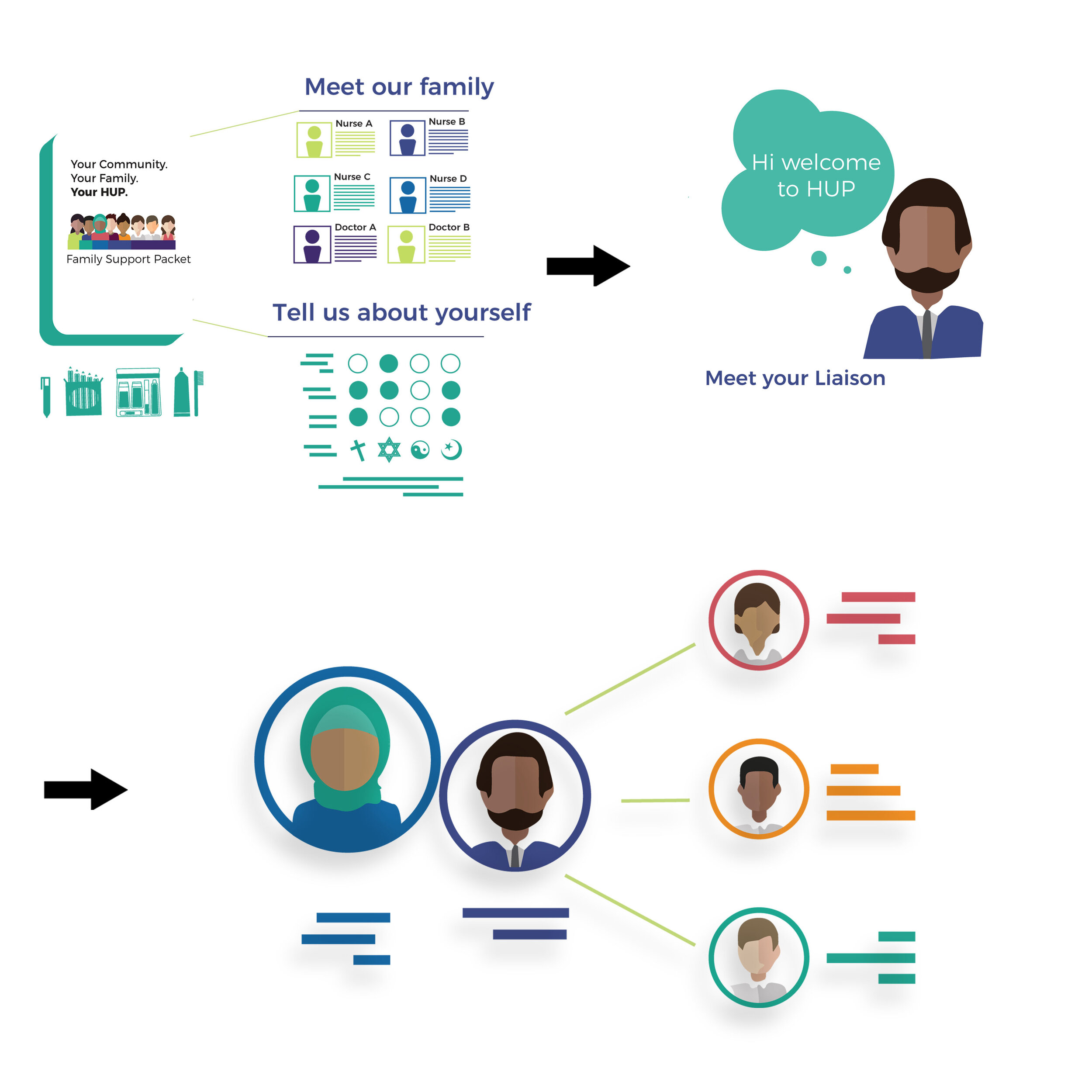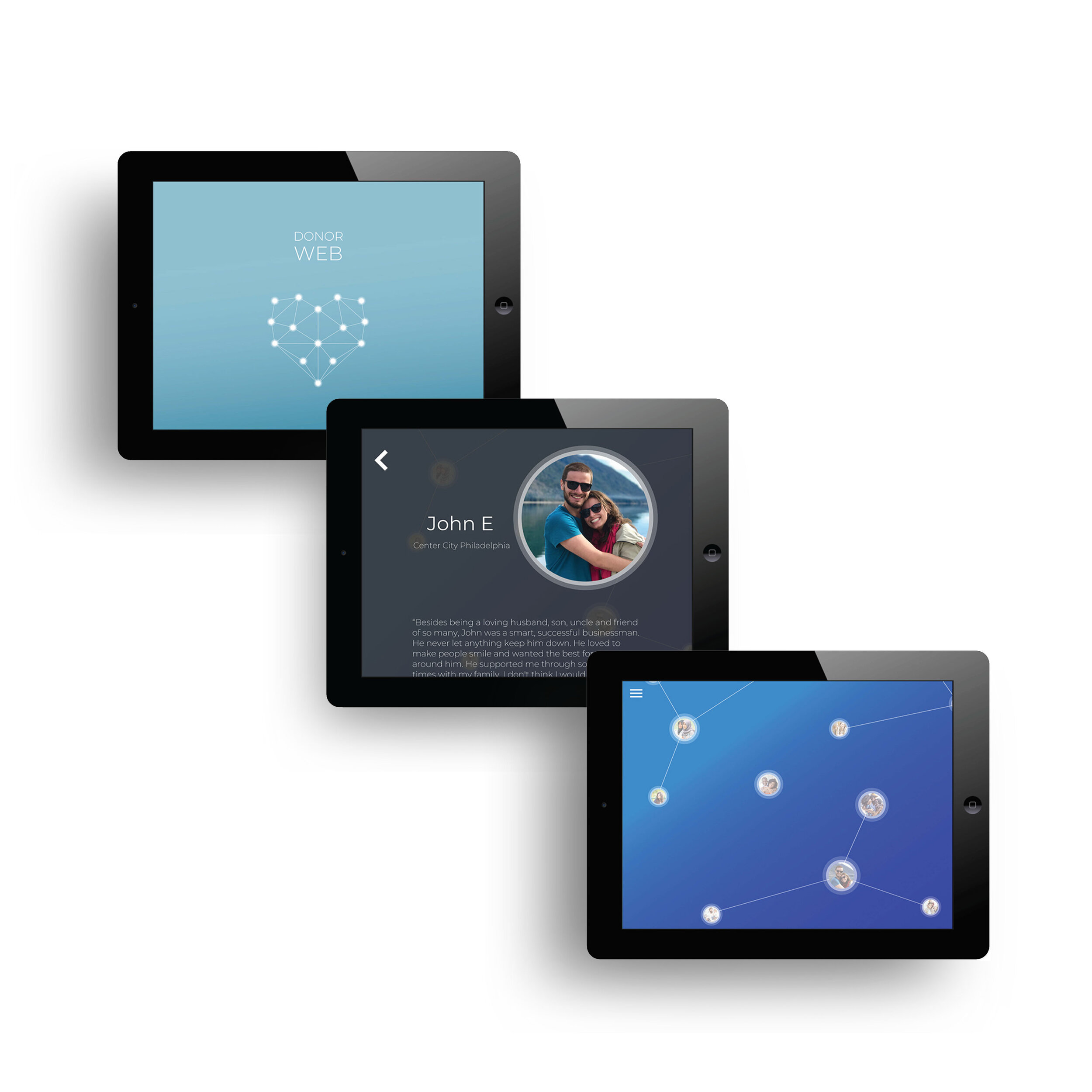Role: User Research Lead, Design and Prototyping | Team of 3 | Client: The Hospital of the University of Pennsylvania | Timeline: February 2017-May 2017 | Outcome: The project was carried forward by the hospital and the Gift of Life (OPO)
‘Follow Your Heart’ is a set of short term and long term solutions that build trust between the black Muslim community of West Philadelphia and the Hospital of the University of Pennsylvania to help people make better decisions about organ donation.
Curiosity
The Problem:
With a widening gap between the number of people that need organs and the number of people willing and able to donate them, the Hospital of the University of Pennsylvania (HUP) took the initiative to try and raise organ donation rates amongst the people it serves. The Hospital decided to focus most specifically on driving organ donation rates in the black Muslim community for two reasons:
This community had the lowest rates of donation of any other demographic, a fact that is true at HUP and reflects national trends
The hospital team believed that since this community was the hardest to approach about organ donation, learnings from efforts focused on this community could be broadly applied to other demographics and situations
Research and Problem Framing:
The hospital originally asked our team to look at how they might increase the rates of organ donation in the black Muslim community of West Philadelphia. Our initial discomfort with this prompt not withstanding, our interviews with black mosque goers in Philly neighborhoods helped us articulate why the hospital’s goal was backwards.
Organ donation rates by race. Data from organdonor.gov
Insights:
Conversations about organ donation are not happening in the home before families are confronted with the issue
Historical mistrust of the hospital system on the part of black and Muslim communities reinforce prevalent myths about organ exploitation
The hospital’s protocols and limitations in communicating with families about organ donation in times of crisis leave big questions unanswered and families feeling insecure
The low rates of organ donation came down to a lack of trust and appropriate communication between minority communities and the hospital system. When we communicated these findings to the hospital framed as an opportunity to improve a long damaged relationship, the doctors and administrators quickly jumped on board.
Creativity
Click to enlarge
Solution Mapping:
We structured our solutions in three tiers focusing on how the hospital organization could change, how we could give hospital goers more holistic and transparent information about organ donation, and how the hospital and the community could work together to improve their overall relationship.
Impact
We proposed four interconnected solutions to the hospital in partnership with the Gift of Life, the local Organ Procurement Organization, that works with the hospital. Our presentation spurred an important conversation between the two parties that hadn’t been happening, and got them excited about the possibility of prototyping our first solution, the Family Packet and Liaison.
The Family Packet + Liaison: A solution the helps families feel more connected and cared for by hospital staff
In order to address the immediate problems of alienation and confusion that families-especially minority families-feel when they walk into a hospital to see an injured loved one, we proposed two interventions:
The Family Packet: A booklet handed to families when they enter the hospital that asks them to provide any information that will help the hospital care for them (language, religion, prohibited behaviors, etc), and introduces some of the healthcare providers they might encounter during an extended stay
The Family Liaison: Using the information the family provides, the families that request the service will be assigned a dedicated liaison that works as an intermediary between them and the hospital staff. With only a few families per liaison, this dedicated staff member can develop a more intimate relationship with the family and be present to help during difficult decisions or conversations (about organ donation and beyond) in a way that a busy nurse cannot.
The Donor Web: A digital solution that empowers families that have been affected by organ donation to have conversations about on their own terms
The Donor Web is an online tool that allows families to connect with other individuals and families that have been touched by organ donation. By creating a visual, interactive ‘web’ of stories from people who have been connected by receiving or donating an organ, the tool demonstrates how wide and far a decision to donate an organ can reverberate.
As a portable, mobile tool, families wanting to learn more about organ donation can access the Donor Web from anywhere and read the honest experiences of other families. Some individuals may opt into leaving their contact information as part of their story if they are open to talking to families making the same tough decisions they did. Connecting people with this tool is a key part in helping interactions that might change the minds of a family on the fence.
Follow Your Heart: An educational game that educates people about organ donation before they have to make the choice
Follow Your Heart is education about organ donation and end of life, gamified. This solution is aimed at addressing misconceptions about organ donation early to help people fully understand the implications these topics have for themselves and others.
As a graphical game, Follow Your Heart can easily be distributed on social media so as to target a wider audience. The game takes the player through a series of questions and leads them to the correct answer through dynamic game play. This tool is is well suited to helping younger people understand the process of organ donation so that when it comes time to make a decision for themselves or others they are ready to do so.
Community Touch Points: Conversations and mobile clinics that create opportunities for better integration and more trust between hospital employees and minority communities
Our longer term, more challenging solution was to propose a series of monthly community discussions between the mosque communities of West Philadelphia and the Hospital. The community would be given the power to host, choose the topic and guide the conversation, and hospital staff would be invited to socialize, inform, and help the community navigate relevant health questions.
When we proposed this to a local imam, he suggested we take it a step further to monthly pop-up clinics where community members could get vaccinations, consultations and interact with the doctors and nurses that work at the Hospital of the University of Pennsylvania. These interactions would be a big step in the right direction for establishing a relationship of trust and mutual respect between the hospital and some of the most vulnerable communities it serves.






